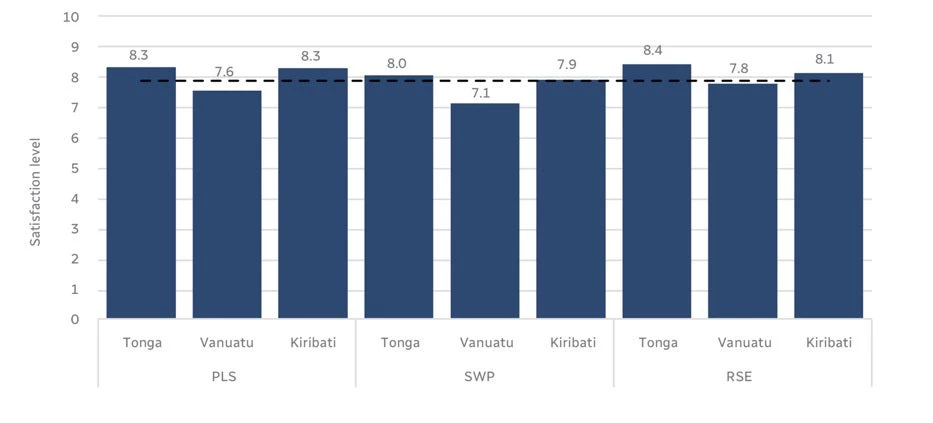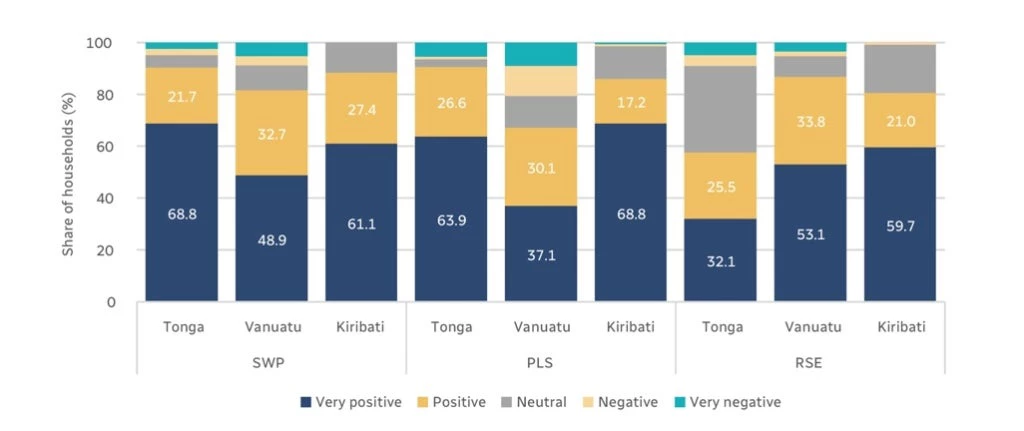In observance of the International Migrants Day, December 18
Having limited formal employment opportunities at home, a large and increasing number of Pacific workers have sought and found jobs overseas. Australia and New Zealand are two major destinations for Pacific job seekers. Every year, tens of thousands of low and semi-skilled Pacific workers migrate for temporary work – often in agriculture - under the Pacific Australia Labor Mobility (PALM) scheme in Australia and the Recognized Seasonal Employers (RSE) scheme in New Zealand . The PALM scheme consists of two streams: short PALM (formerly the Seasonal Worker Programme) and long PALM (formerly the Pacific Labor Scheme). The former provides seasonal low-skilled employment for up to 9 months per year while the latter provides semi-skilled jobs for 1-4 years.
As these programs expand and evolve, much has been discussed about how they have affected lives in the Pacific. Many point to the significant economic benefits to Pacific islanders, such as remittances and higher earnings overseas. Others raise concerns about the toll of separation on families, worker exploitation, and the risk of Pacific Islands countries losing their skilled workers.
Two new studies bring to this debate rich insights based on large surveys of those directly involved in labor mobility: migrant workers, their households and their communities.
The Gains and Pains of Working Away from Home, a joint study between the World Bank and the Development Policy Centre, Australian National University, documents the economic and social impacts of Pacific labor mobility schemes with fresh quantitative data from the Pacific Labor Mobility Survey. The survey, conducted between November 2021 and March 2023, is the first major collection of data since the introduction of the Pacific Labor Scheme, covering 2,085 migrant workers in the RSE and PALM schemes, and 4,241 households in Kiribati, Tonga, and Vanuatu.
A complementary qualitative study shed light on gender and social dimensions of labor migration in the region, based on 461 in-depth interviews with migrant workers, their families, community members, employers and key informants.
Findings from PLMS challenge some popular misconceptions and updates existing knowledge on the economic benefits of Pacific labor mobility. The qualitative exercise for the most part reaffirms our quantitative findings. More importantly, it adds nuances and brings out individual stories – both positive and negative – on the social implications of the Pacific labor mobility schemes.
Overall, the schemes have brought net positive impacts, both economic and social, to workers, their households, and communities.
That participants earn significantly more than they would at home is well known. Less well known is the scale of these gains: between three and four times pre-departure earnings for Tongan workers, and up to 10 times for ni-Vanuatu workers. On average close to 60% of their earnings can be saved and sent home. The rising costs of living in host countries do not appear to have dampened the economic attractiveness of the schemes for workers.
Most workers are very satisfied with their experience in host countries (Figure 1), and the schemes are widely perceived as beneficial by both participating and non-participating households (Figure 2). Importantly, there is no evidence of any decline in worker satisfaction relating to the COVID-19 pandemic or recent expansion of the schemes.
Figure 1: Migrant workers reported high level of satisfaction with their employment, on a scale of 0-10
Note: The dotted line is the average satisfaction level across all schemes and nationalities.
Source: The Gains and Pains of Working Away from Home.
Among the minority of dissatisfied workers, their complains often related to earnings not meeting expectations and excessive or non-transparent salary deductions.
The studies also highlight other challenges on worker’s welfare, including workers’ demand for portability and flexibility; inadequate health insurance coverage; and safety and cultural issues related to mixed gender accommodations.
Participation in the schemes appears to generally strengthen family relationships, empower women, and shift gender-related norms. About four in five surveyed workers reported improvement in their relationships with their children, and two-thirds reported improved marital relationships – findings that challenge commonly held assumptions about the widespread adverse impacts of family separation.
Figure 2: Most households perceive labor mobility schemes as beneficial to their community
Source: The Gains and Pains of Working Away from Home.
Having said that, a minor but non-negligible share of workers reported worsening marital relationship (24%) and parental relationship (7%). The absence of workers create pressure on families that remain behind.
Historically, women’s participation in labor mobility programs has been limited, with women constituting around 13% of participants. The qualitative study identifies key barriers to female participation: the need for approval by family members, unfavorable community attitudes rooted in traditional gender roles, and preferences to hire men among some employers and recruitment agents.
These data provide new evidence to support the growth of, and reforms to, labor mobility programs to deliver even larger gains for families, communities, and Pacific countries. Our studies propose specific policy recommendations to this end.






Join the Conversation